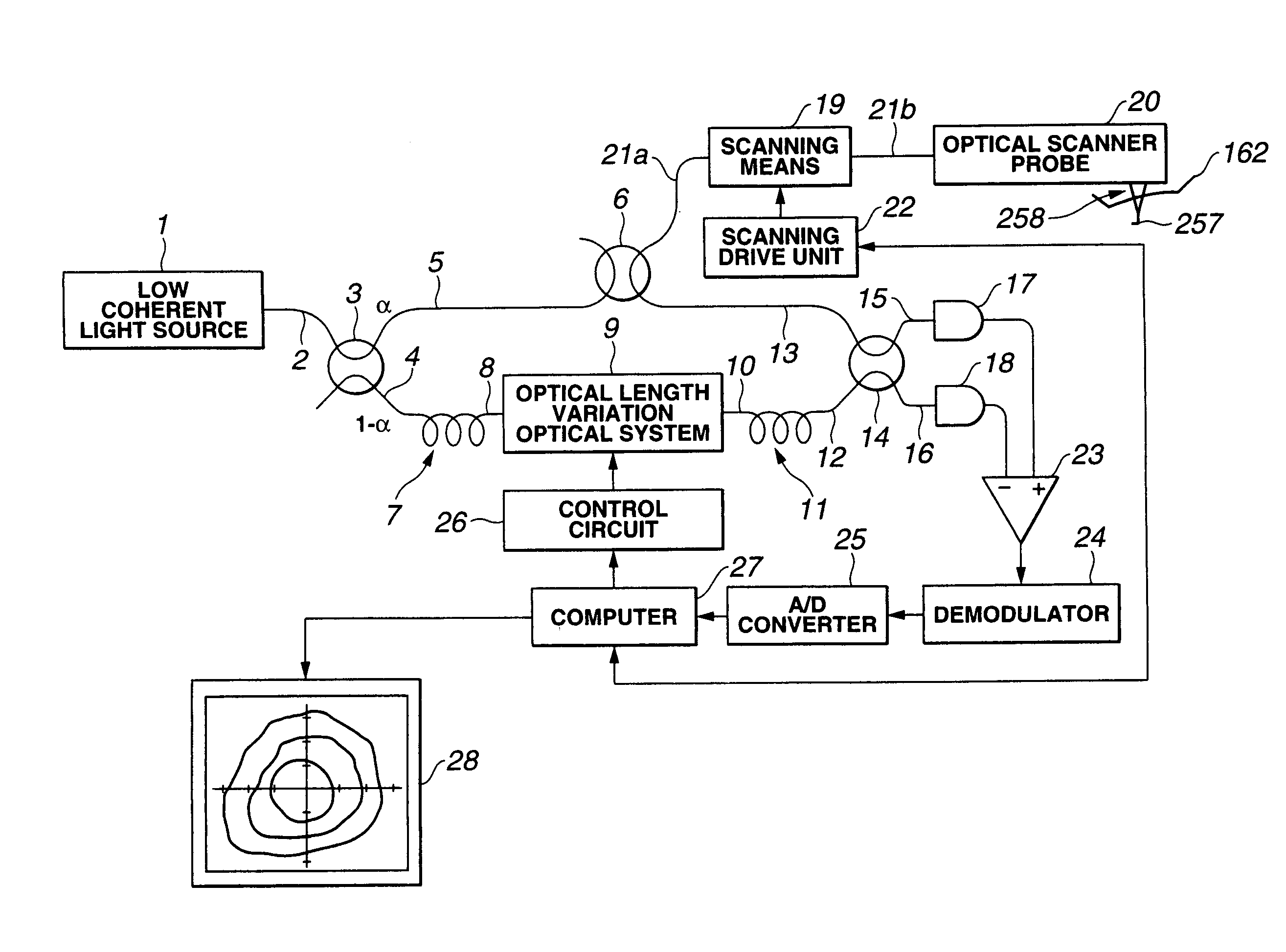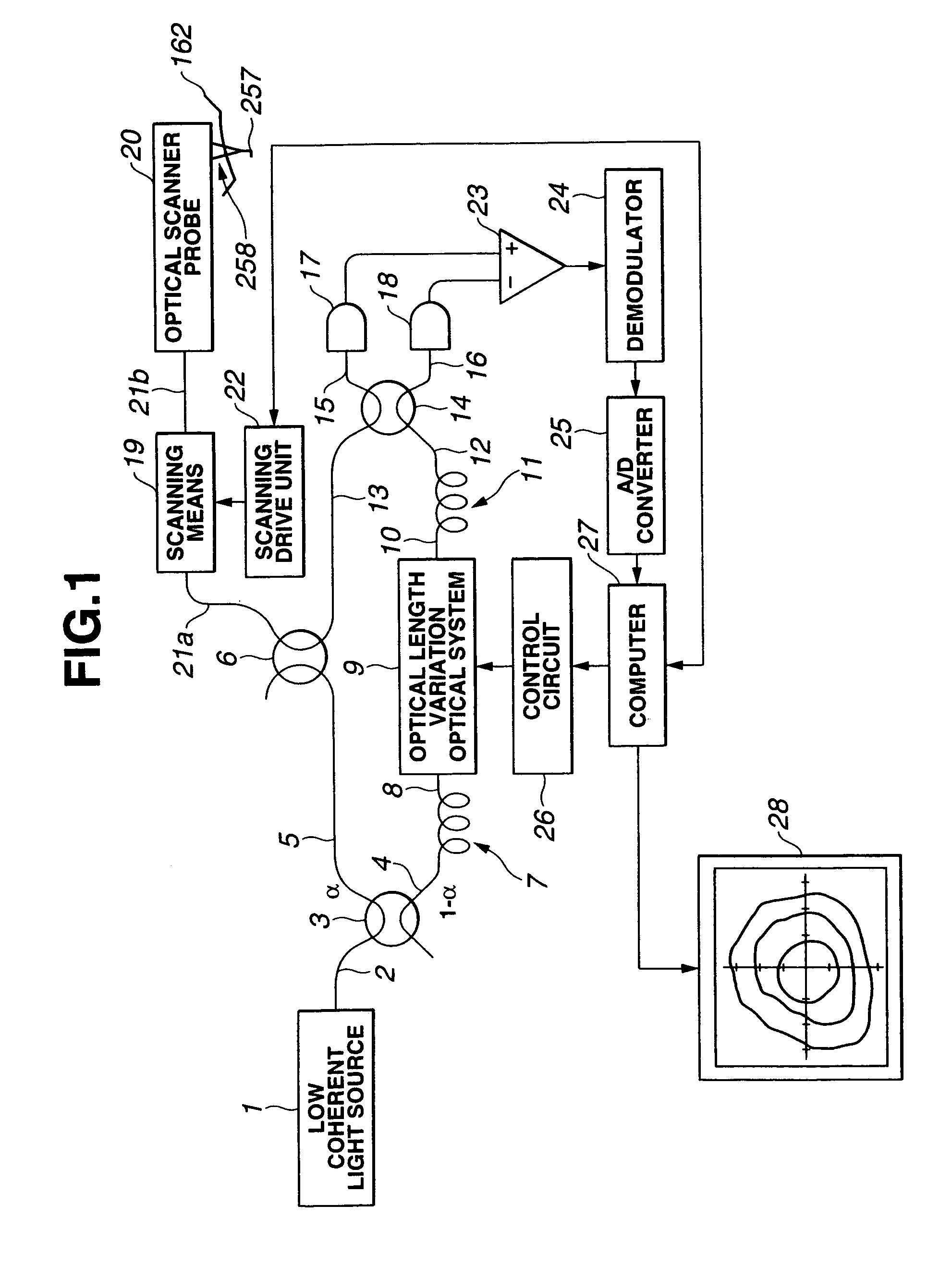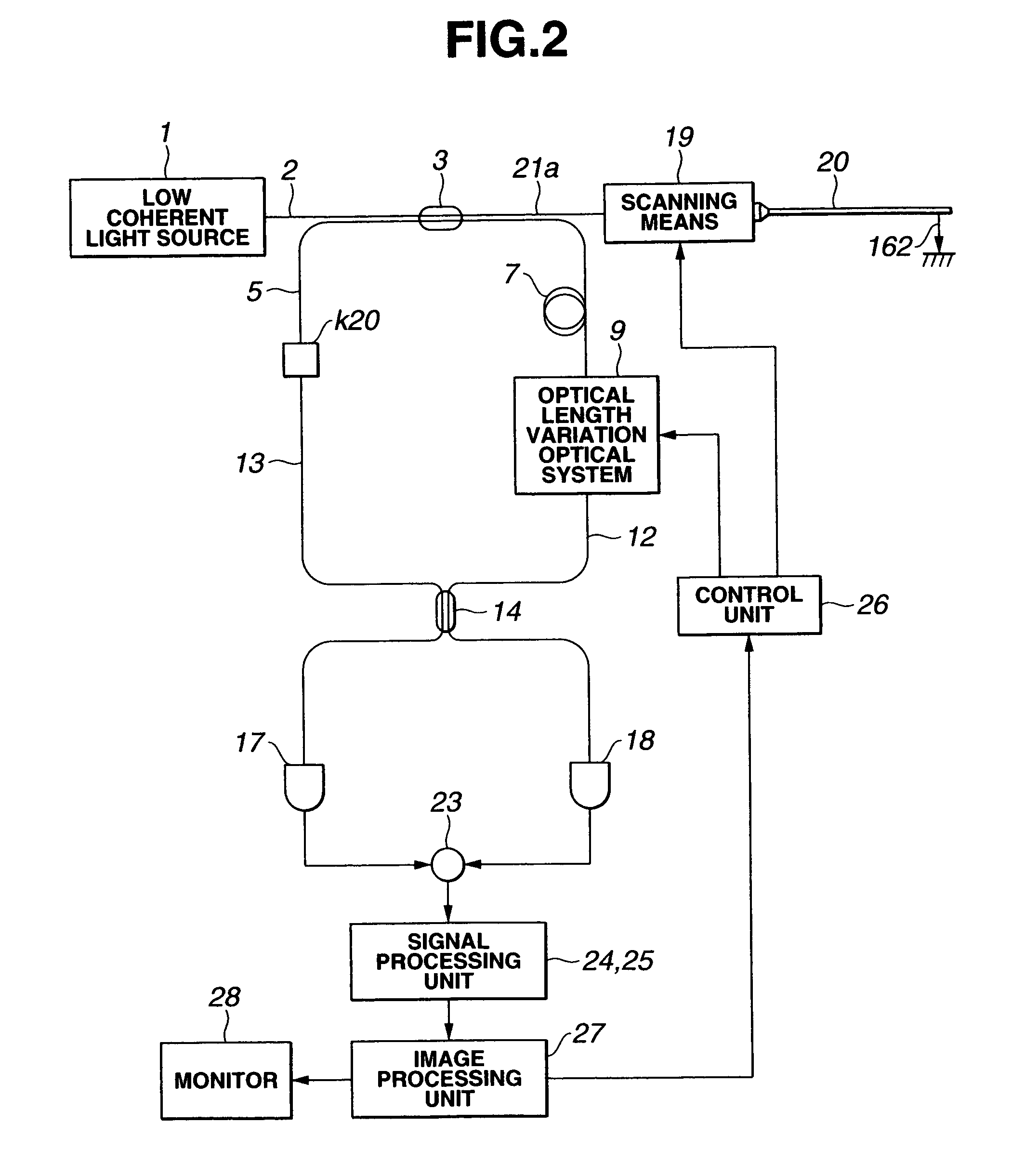Rapid depth scanning optical imaging device
a depth scanning and optical imaging technology, applied in measurement devices, instruments, interferometers, etc., can solve the problems of difficult to improve a signal-to-noise ratio, poor image quality, and limited frequency of voltage applied to drive the reference mirror so as to advance or withdraw it by about 5 mm, etc., to achieve rapid reference scanning and high signal-to-noise ratio
- Summary
- Abstract
- Description
- Claims
- Application Information
AI Technical Summary
Benefits of technology
Problems solved by technology
Method used
Image
Examples
first embodiment
[0128]
[0129](Constituent Features)
[0130]An optical imaging device shown in FIG. 1 has a low coherent light source 1 such as a super-luminescent diode (SLD). Light emanating from the low coherent light source 1 and having a wavelength of, for example, 1300 nm, requires a coherence length of, for example, about 15 μm, and exhibits low coherence that is of the level of producing interference within only a narrow range on an object. For example, assuming that the light is bifurcated into two light beams and then reunited, only when a difference between the optical lengths for the two beams from the point of bifurcation to the point of reunion is about 15 μm, the beams interfere with each other.
[0131]The light emanating from the low coherent light source 1 is routed to a first single-mode (hereinafter SM) optical fiber 2, and branched into a second SM optical fiber 4 and a third SM optical fiber 5 by an optical coupler 3. The optical coupler 3 branches the light on the first SM optical f...
second embodiment
[0233]
[0234]The second embodiment is a variant of the first embodiment in terms of the optical elements located behind a second diffraction grating included in an optical length variation optical system.
[0235]FIG. 10 schematically shows the arrangement of optical elements located behind a second diffraction grating included in an optical length variation optical system employed in the second embodiment. The optical elements located ahead of the second diffraction grating h8 are identical to those employed in the first embodiment. Illustration of the optical elements will therefore be omitted. Moreover, the other components of a tomographic observation / diagnosis device realized with an optical imaging device in accordance with the present embodiment other than the optical length variation optical system are identical to those of the first embodiment. An overall configuration of an optical coherent tomography system including the optical imaging device will therefore be omitted.
[0236]...
third embodiment
[0251]
[0252]The third embodiment has a wedged prism, which serves as a phase modulation element included in an optical length variation optical system employed in the first embodiment, replaced with another optical element.
[0253]FIG. 15 schematically shows the components of an optical length variation optical system in accordance with the present embodiment. The other components of a tomographic observation / diagnosis device realized with an optical imaging device in accordance with the present invention other than the optical length variation optical system are identical to those of the first embodiment. An overall configuration of an optical coherence tomography system including the optical imaging device will therefore be omitted.
[0254]The optical length variation optical system in accordance with the present embodiment consists mainly of a light introduction block h3, a pair of a first diffraction grating h4 and a first positive lens h5, a prism h6′, a pair of a second positive l...
PUM
 Login to View More
Login to View More Abstract
Description
Claims
Application Information
 Login to View More
Login to View More - R&D
- Intellectual Property
- Life Sciences
- Materials
- Tech Scout
- Unparalleled Data Quality
- Higher Quality Content
- 60% Fewer Hallucinations
Browse by: Latest US Patents, China's latest patents, Technical Efficacy Thesaurus, Application Domain, Technology Topic, Popular Technical Reports.
© 2025 PatSnap. All rights reserved.Legal|Privacy policy|Modern Slavery Act Transparency Statement|Sitemap|About US| Contact US: help@patsnap.com



